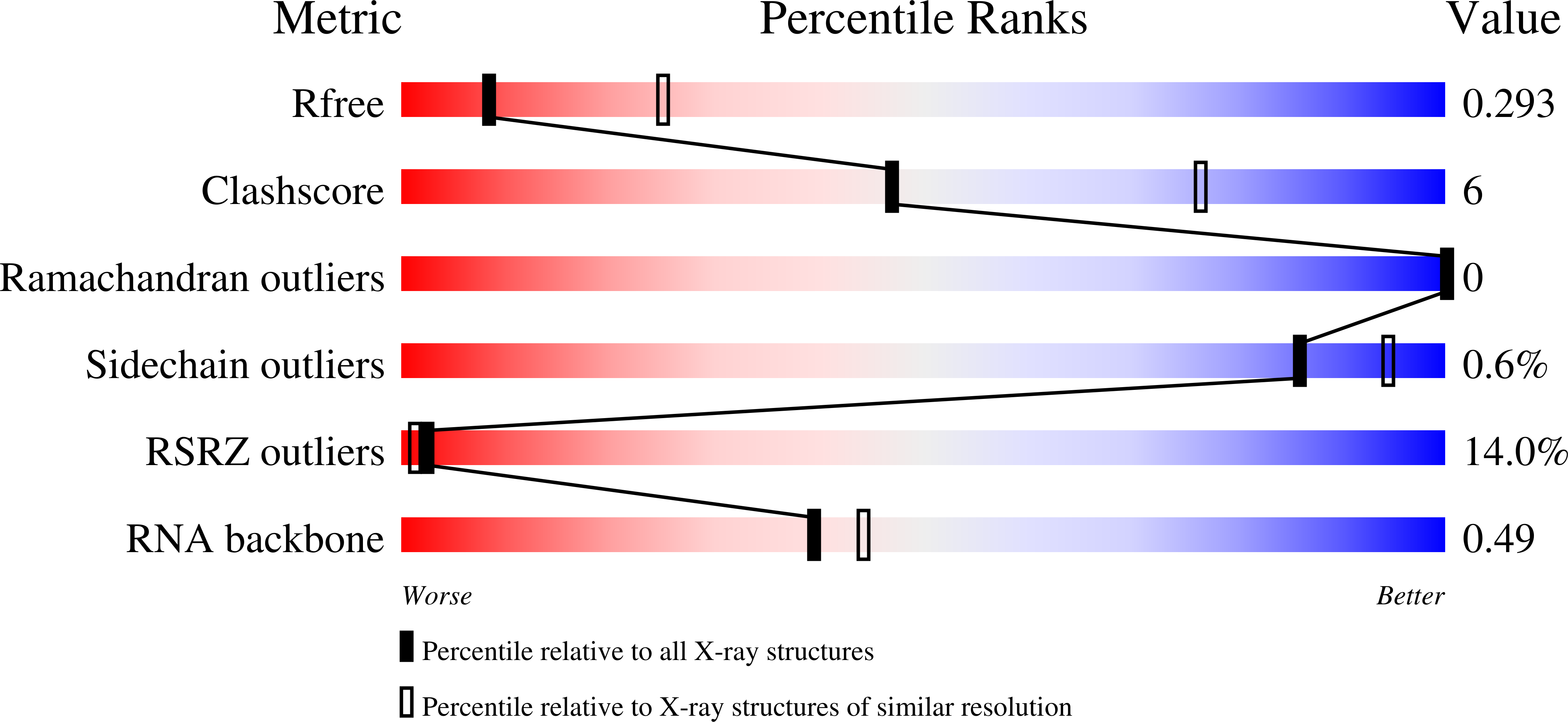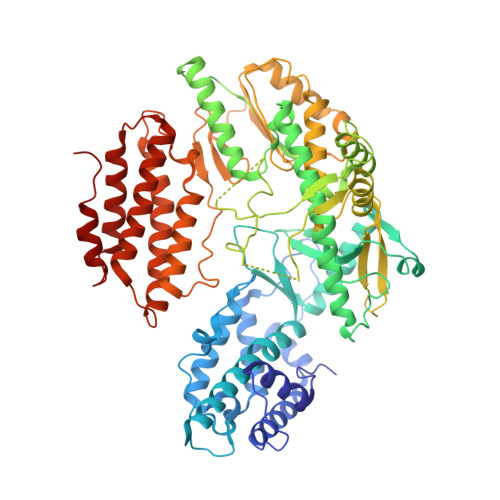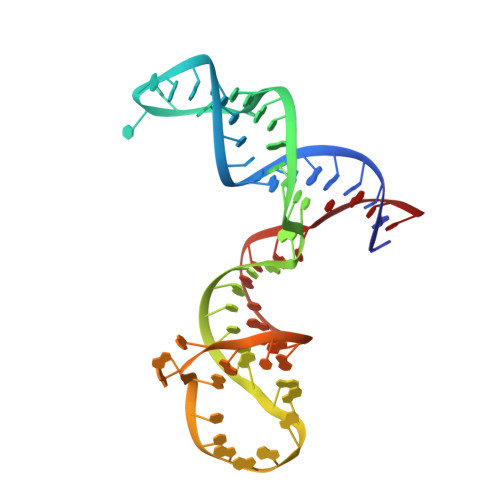Crystal structures of N-terminally truncated telomerase reverse transcriptase from fungi‡.
Zhai, L.T., Rety, S., Chen, W.F., Song, Z.Y., Auguin, D., Sun, B., Dou, S.X., Xi, X.G.(2021) Nucleic Acids Res 49: 4768-4781
- PubMed: 33856462
- DOI: https://doi.org/10.1093/nar/gkab261
- Primary Citation of Related Structures:
6ZD1, 6ZD2, 6ZD6, 6ZDP, 6ZDQ, 6ZDU - PubMed Abstract:
Telomerase plays critical roles in cellular aging, in the emergence and/or development of cancer, and in the capacity for stem-cell renewal, consists of a catalytic telomerase reverse transcriptase (TERT) and a template-encoding RNA (TER). TERs from diverse organisms contain two conserved structural elements: the template-pseudoknot (T-PK) and a helical three-way junction (TWJ). Species-specific features of the structure and function of telomerase make obtaining a more in-depth understanding of the molecular mechanism of telomerase particularly important. Here, we report the first structural studies of N-terminally truncated TERTs from Candida albicans and Candida tropicalis in apo form and complexed with their respective TWJs in several conformations. We found that Candida TERT proteins perform only one round of telomere addition in the presence or absence of PK/TWJ and display standard reverse transcriptase activity. The C-terminal domain adopts at least two extreme conformations and undergoes conformational interconversion, which regulates the catalytic activity. Most importantly, we identified a conserved tertiary structural motif, called the U-motif, which interacts with the reverse transcriptase domain and is crucial for catalytic activity. Together these results shed new light on the structure and mechanics of fungal TERTs, which show common TERT characteristics, but also display species-specific features.
Organizational Affiliation:
State Key Laboratory of Crop Stress Biology in Arid Areas, College of Life Sciences, Northwest A&F University, Yangling, Shaanxi 712100, China.















